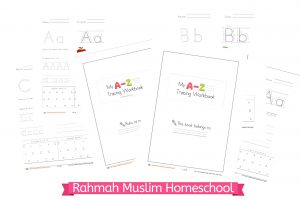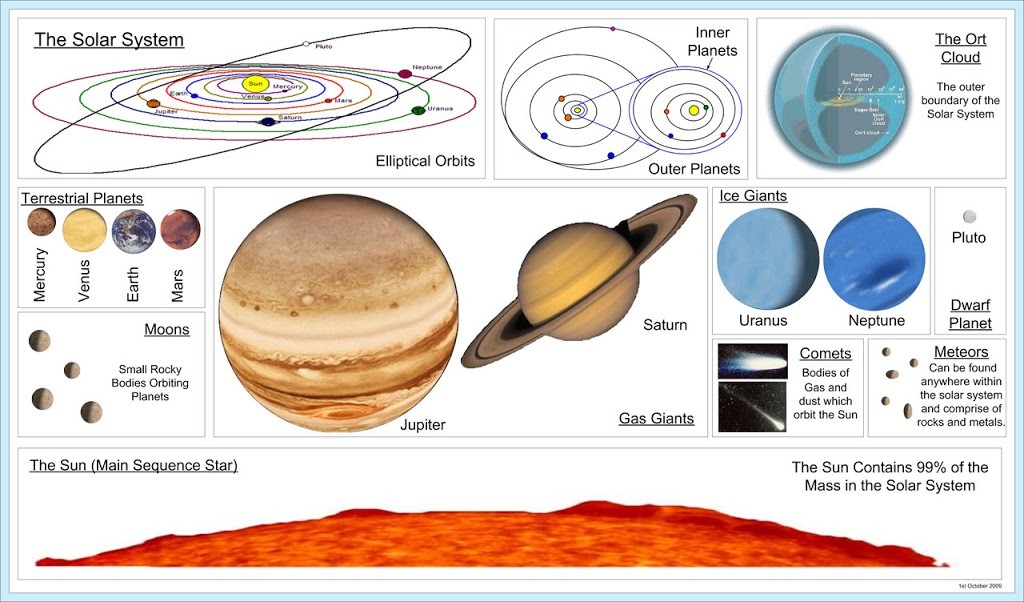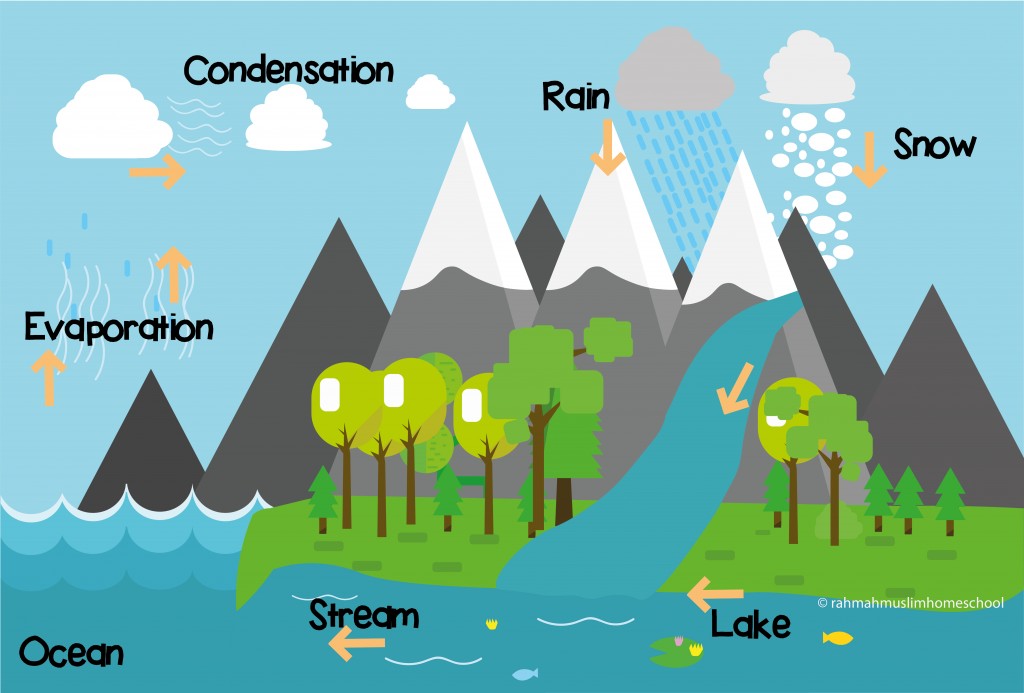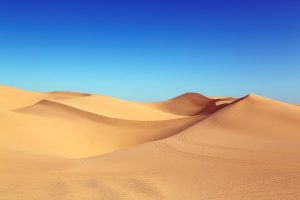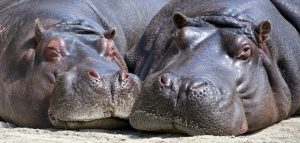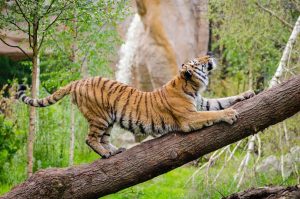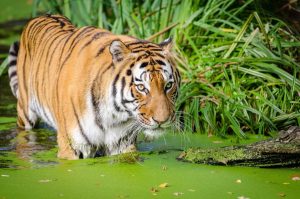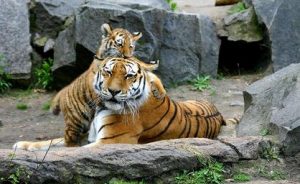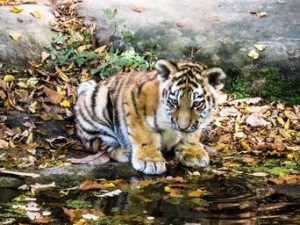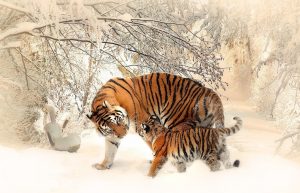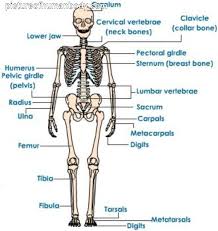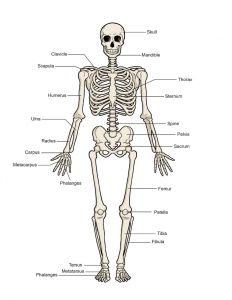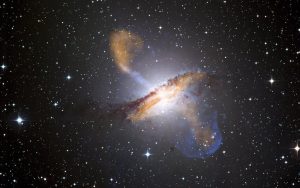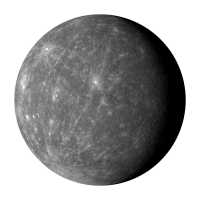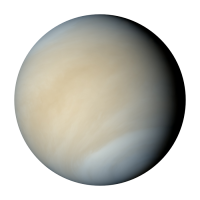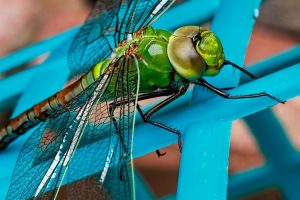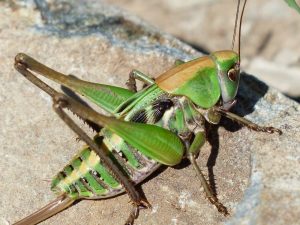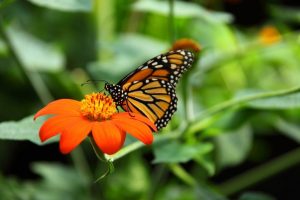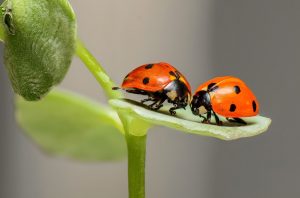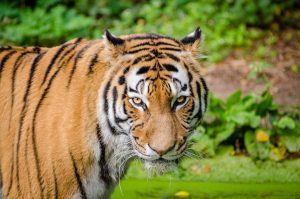
Did you know tigers are the largest of the big cat family?
Their Latin name is Panthera tigris. Tigers are mammals the give birth to live young.They weight as much as three adults between 180-300 kg. Tigers can reach the length of up to 11 feet. They can run up to 55 km/h.
They have black stripes all over them, and an orange body with a white underbelly. It helps them to camouflage when they hunt.
Tigers have massive eyes and really good eyesight, so they can hunt in the night. Their strong jaws and big sharp teeth help them catch other animals to eat.
Their long tail helps them balance when they run and climb. Mammals eat meat, their favorite meals are deer and monkeys . They only drink water. They live up to 15 years in the wild and 20 years in captivity.
Tigers normally hunt alone when it’s night time. They usually hunt large mammals. They can see very well in the night. Their eyes glow in the dark and they can feel their way in the dark using their very long whiskers.
Tigers are good swimmers too. They can swim up to 6 kilometers.
.
Tiger cubs are blind, in about 6 to 12 days their eyes open.
Wild tigers live in Asia. About 100 years ago there was about 100,000 tigers in the wild, sadly they was hunted and they got killed, today only 5,000 to 7,000 tigers are left.
Tigers doesn’t live in family groups like lions. They like to be alone.
Siberian tigers the biggest of all tigers. They can grow up to 6-9 feet, some can grow up to 11 feet. Siberian tigers weigh about 300-600 pounds. Males are larger than females.
The Siberian tiger is also known as the Amur tiger. Siberian tigers live in really cold places. A male shares it’s territory with a female, but not with any other males. They often hunt in the water. There are about 400 to 500 Siberian tigers left in the wild.
Article by N (8 y.o), edited by Mum
Pictures: Public Domain
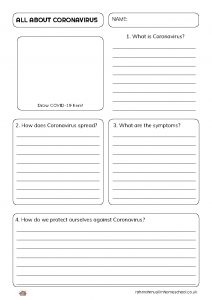 This blank fact file template is a great resource to have children research about Coronavirus. Including how does it spread, what is the symptoms and how do we protect ourselves against Coronavirus.
This blank fact file template is a great resource to have children research about Coronavirus. Including how does it spread, what is the symptoms and how do we protect ourselves against Coronavirus.
